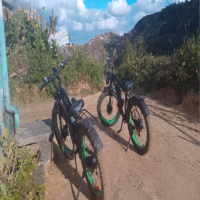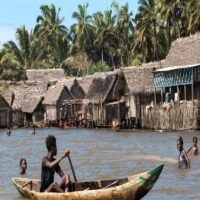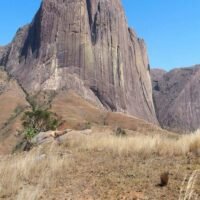Tucked away in the southern part of Madagascar’s central highlands, Ambalavao is a small town full of charm, history, and authenticity. Located on the well-traveled Route Nationale 7 (RN7), it lies about 470 kilometers south of Antananarivo and acts as a gateway between Madagascar’s high plateaus and the arid south.
With its spectacular mountain scenery, unique traditional industries, vibrant local markets, and proximity to some of the country’s most accessible wildlife reserves, Ambalavao is much more than a simple stopover — it’s a destination in its own right for those seeking meaningful cultural experiences in Madagascar.
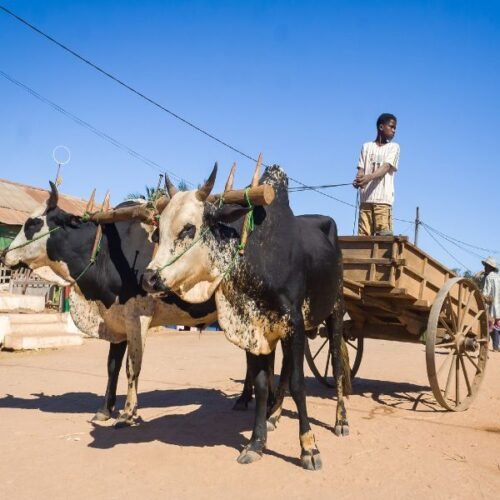
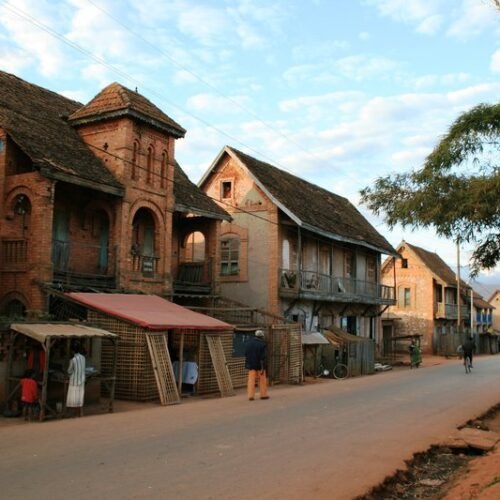
Brief History of Ambalavao
Ambalavao sits in the historical territory of the Betsileo people, one of the island’s major ethnic groups. The region has a long and rich past, shaped by conflict, colonial influence, and cultural resilience.
During the 18th century, the Betsileo clashed with the Bara people from the south in efforts to protect their land. In the 19th century, they faced off against the Merina Kingdom, whose growing dominance threatened Betsileo autonomy. These struggles gave rise to many sacred sites and memorials scattered throughout the region. One of the most symbolic is the rock of Ifandana, southeast of the city — a somber place from which those who refused Merina rule chose to end their lives in defiance.
Ambalavao began to take on greater political and economic importance in 1900, when the French colonial administration elevated the town to the status of district capital and invested in public infrastructure, including schools. In 1916, a major road linking Ambalavao to Antananarivo was opened, further boosting its role as a regional center of trade and governance.
Even today, Ambalavao retains its historical significance while offering visitors a blend of cultural depth and natural beauty.
When to Visit Ambalavao
Ambalavao enjoys a mild, temperate climate typical of Madagascar’s highlands. This makes it a pleasant year-round destination, but the best time to visit is during the dry season, from May to October.
-
May to August: Cool and dry — ideal for hiking and cultural activities.
-
September and October: Warmer and sunnier — excellent for photography, nature walks, and local festivals.
-
November to April (wet season): Rain is more frequent, especially in January and February, but the surrounding hills turn lush green, adding a different kind of beauty to the region.
If your trip is flexible, consider planning it around the weekly zebu market or the festivals of the local Catholic and Protestant communities, which often include processions, music, and traditional food.
What to Do in Ambalavao
Ambalavao’s charm lies in its blend of nature, culture, and craftsmanship. Whether you’re an adventure traveler, a culture enthusiast, or a curious wanderer, the town offers plenty to see and do.
1. Visit the Antemoro Paper Workshops
Ambalavao is world-renowned for producing Antemoro paper, a handmade paper originally developed by Arab settlers. This eco-friendly craft involves using the bark of the Avoha tree, natural dyes, and pressed flowers or leaves to create stunning artistic sheets.
At the paper workshops in town, you can:
-
Observe the traditional manufacturing process
-
Try your hand at decorating your own paper
-
Purchase beautiful handmade souvenirs such as cards, wall art, and notebooks
This experience is a favorite among travelers and supports local artisans and heritage preservation.
2. Explore the Anja Community Reserve
Just 13 kilometers south of Ambalavao, the Anja Community Reserve is a shining example of sustainable tourism in Madagascar. Managed entirely by the local community, this 30-hectare forest reserve is home to:
-
Dozens of ring-tailed lemurs
-
Chameleons, geckos, and other reptiles
-
Indigenous flora and medicinal plants
The reserve offers guided treks ranging from 1 to 3 hours, during which you can learn about local ecology, ancestral tombs, and the village’s conservation efforts — all while supporting community livelihoods.
3. Wander the Zebu Market
Ambalavao hosts one of the largest zebu cattle markets in the country every Wednesday. These iconic humped cows are central to Malagasy life, symbolizing wealth, tradition, and even spiritual power.
The market is a vibrant, chaotic, and colorful affair — part trade center, part social gathering. It’s one of the best places to immerse yourself in local culture, though it’s recommended to visit with a local guide to better understand the customs and etiquette.
4. Discover Sacred and Historic Sites
History buffs will appreciate a visit to Ifandana Rock, not only for its dramatic natural setting but for its deep cultural and historical significance. From the top, you’ll get panoramic views of the surrounding region — but the real story lies in its past as a place of resistance and tragedy during the Merina expansion.
There are also smaller shrines, tombs, and memorials in the surrounding countryside, many of which are tied to ancient Betsileo customs and beliefs.
5. Gateway to the Andringitra Mountains
Ambalavao is the northern starting point for trips into Andringitra National Park, one of the most beautiful and diverse national parks in Madagascar. While the park entrance is closer to the village of Namoly, many travelers arrange logistics from Ambalavao.
The park features:
-
Mount Pic Boby (Madagascar’s second-highest peak)
-
Waterfalls, highland meadows, and granite cliffs
-
A variety of hiking trails, from easy walks to multi-day treks
If you’re a nature lover or adventure seeker, this extension from Ambalavao is well worth your time.
Why Visit Ambalavao?
Ambalavao may be small, but it packs a big punch when it comes to authentic Malagasy experiences. Here, you’ll find:
-
Rich traditions preserved through crafts and markets
-
A vibrant community passionate about eco-tourism and heritage
-
Easy access to wildlife reserves and natural parks
-
Deep historical roots that offer insight into Madagascar’s complex past
Whether you’re on a longer road trip along RN7 or seeking off-the-beaten-path destinations, Ambalavao offers culture, connection, and beauty in one unforgettable package.
Planning your trip to Ambalavao?
Let us help you craft the perfect itinerary, combining nature, history, and hands-on local experiences. Contact us today to start your journey into the heart of Madagascar.


